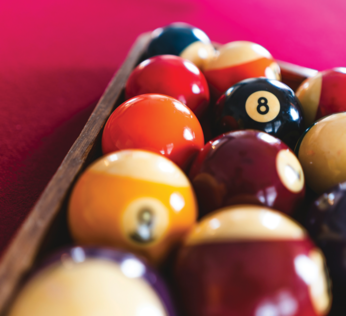Pool simulation with Go and Fyne
Programming Snapshot – Go Pool Simulation
To improve his skill at the pool table, Mike Schilli sets out to program a simulation in Go using the Fyne framework.

If you just aim by the seat of your pants at the pool table in the pub, the results will vary between brilliant and downright embarrassing. That's why I decided to finally learn the angle at which you have to hit a ball so that it heads off in the right direction, straight for the pocket. To do this, I studied Poolology [1], which explains the strategy in detail. I don't have a pool table at home to practice on, so I wondered: How difficult would it be to write a graphical simulation of the pool balls in Go? That way I could try out the technology onscreen before challenging the biggest pool hustlers in the wickedest pool halls of San Francisco.
In the simplest of cases, pool players shoot the cue ball straight into the ball to be played, and the cue ball hits the colored ball right in the middle (you hope). The colored ball absorbs the energy of the cue ball and moves in the same direction, while the cue ball remains stationary – unless you used a trick such as spin. Things become more complicated if you hit a colored ball at an angle. In that case, it will shoot off to the side while the cue ball keeps moving along a deflected path. The angles here depend on the amount of overlap with which the colored ball was hit. In more concrete terms: If a pool player does not aim at the center of a ball but exactly at its edge (called a half-ball), the colored ball drifts away at an angle of about 30 degrees.
[...]
Buy this article as PDF
(incl. VAT)
